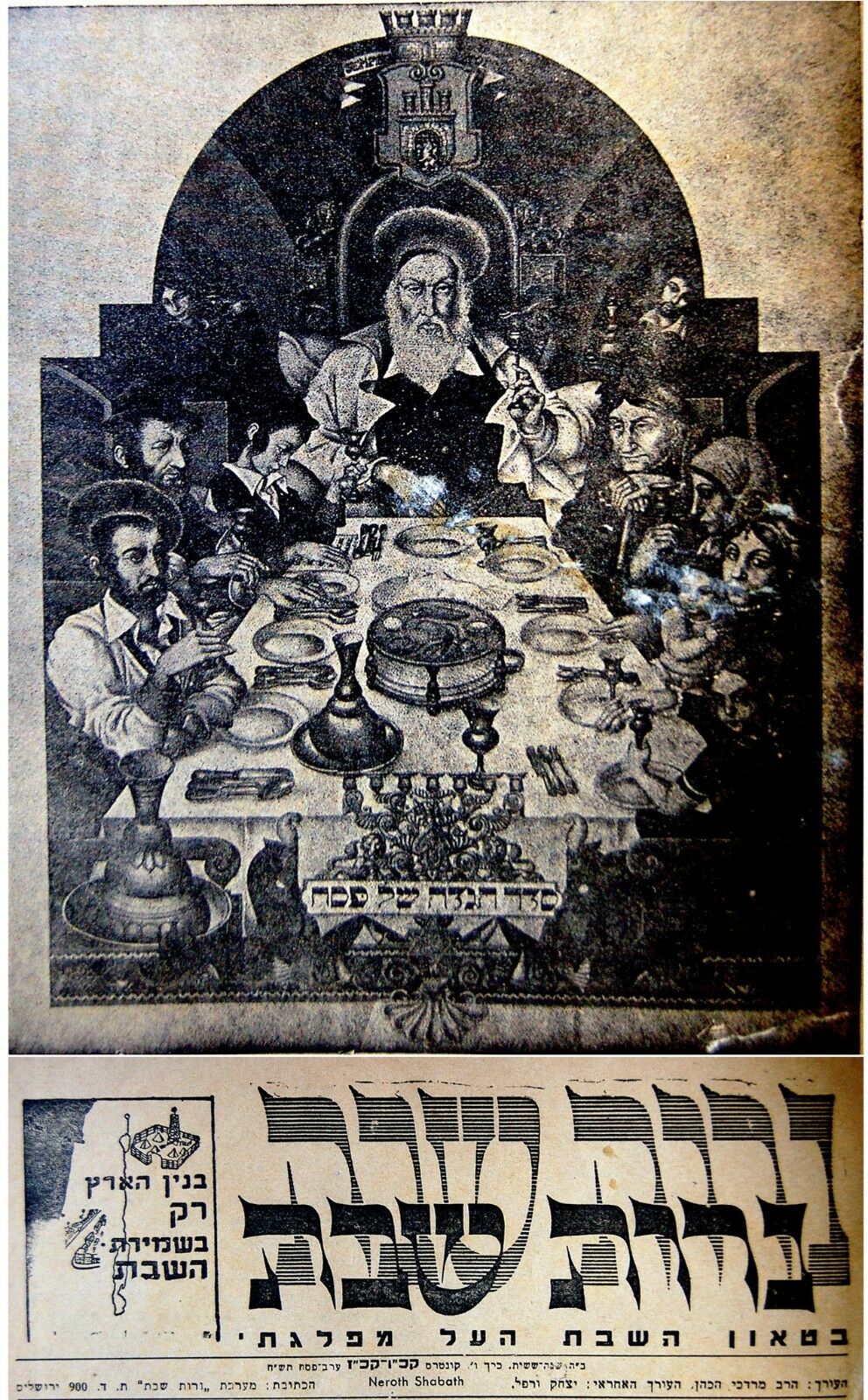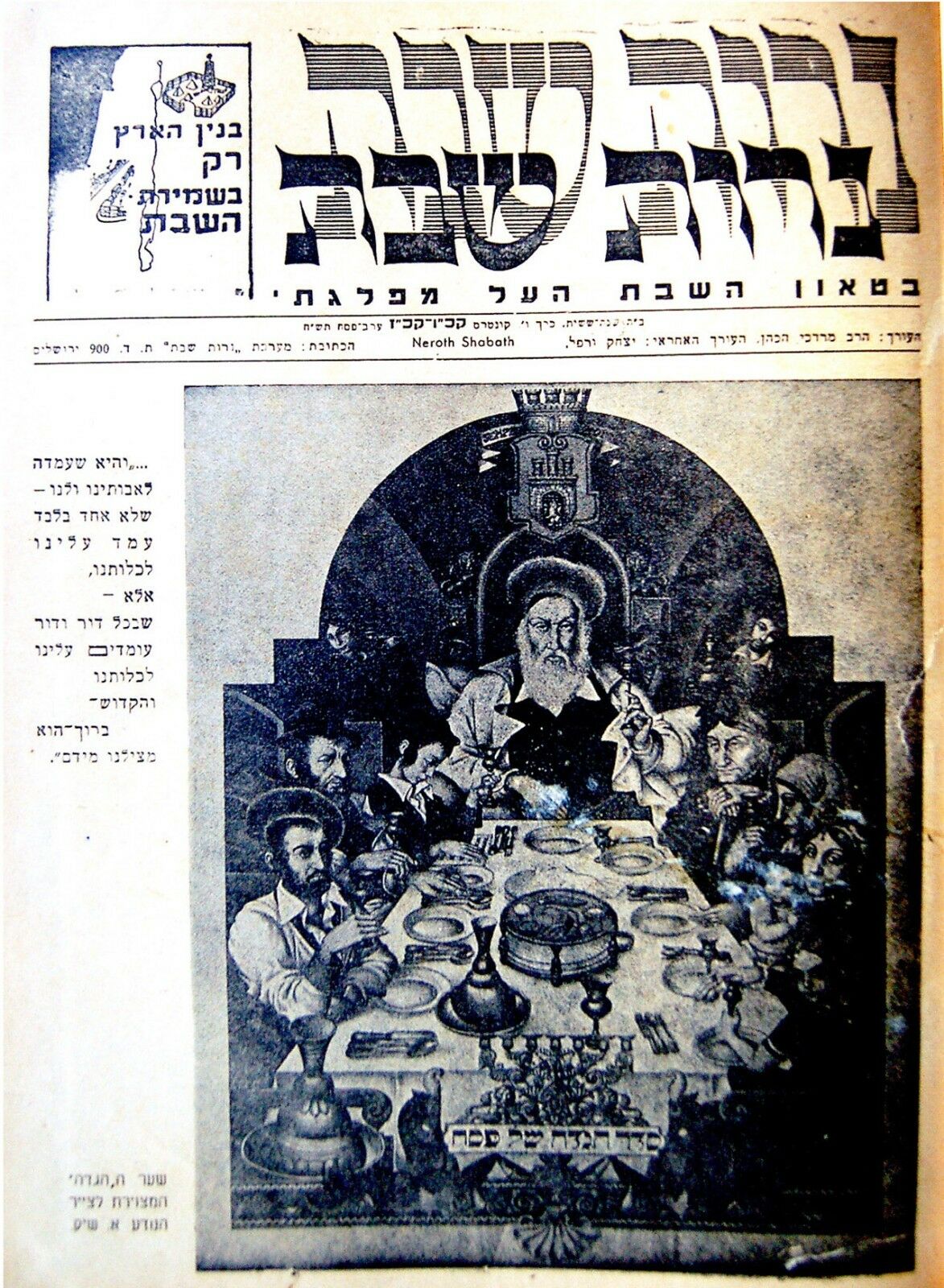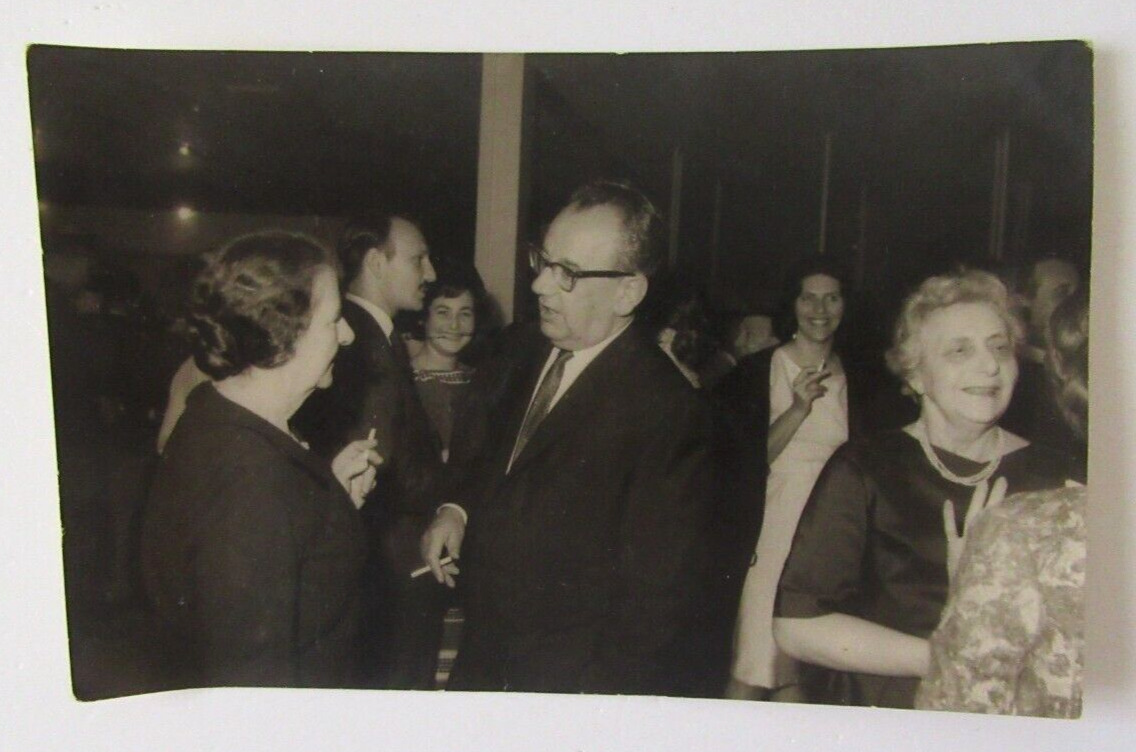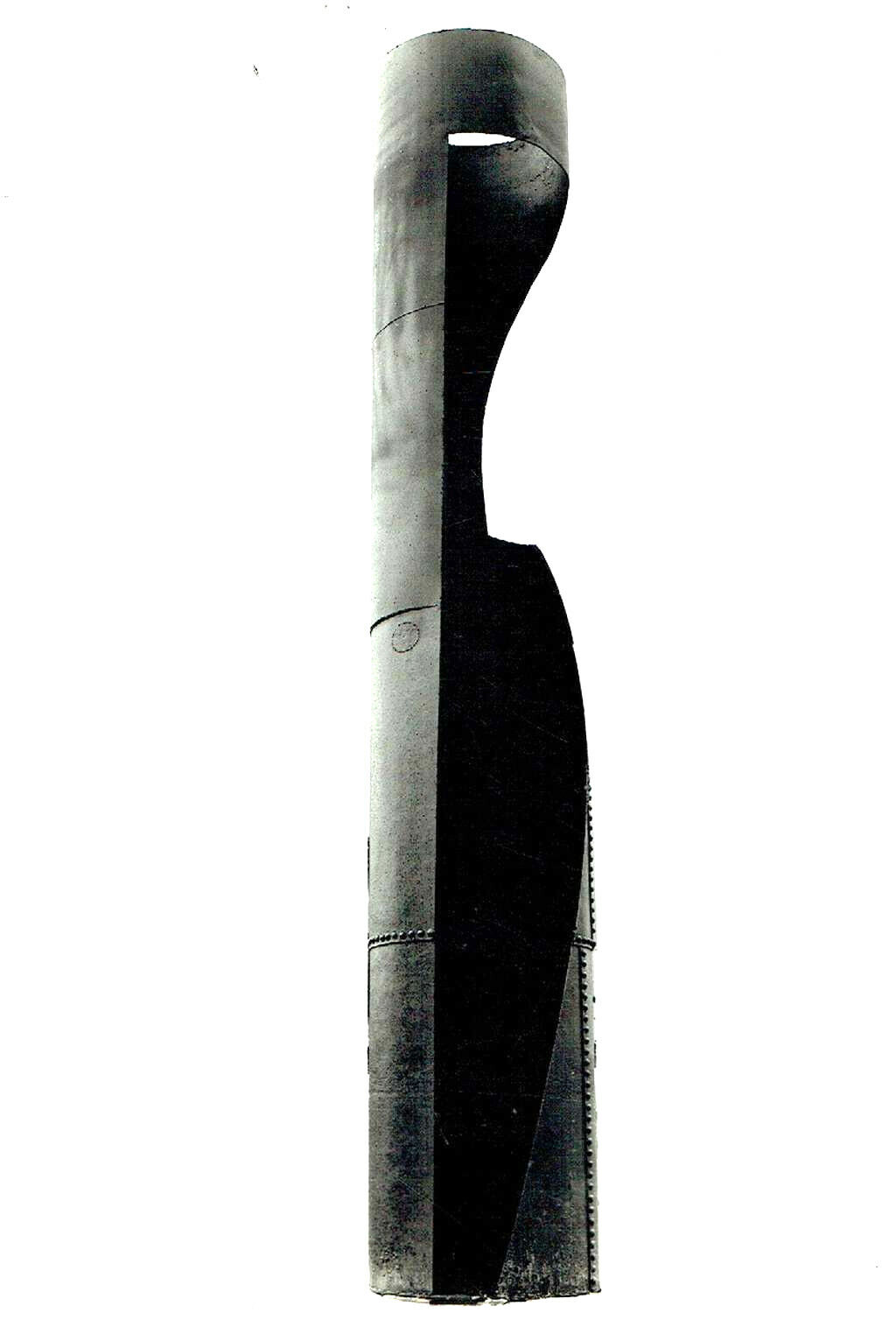-40%
1948 Palestine ARTHUR SZYK Rare MAGAZINE COVER Judaica PASSOVER HAGGADAH Jewish
$ 39.6
- Description
- Size Guide
Description
DESCRIPTION:
Arthur SZYK fans and collectors would much enjoy this EXTREMELY RARE exceptional 70 years old item . It's the PASSOVER
-
PESSACH
April 1948 issue of the Hebrew illustrated magazine "NEROTH SHABATH" ( The SHABBAT - SHABBOS CANDLES ) which was published in Jerusalem Eretz Israel ( Then also refered to as Palestine ) . Published only a month before
the Jewish State was born , and before its WAR of INDEPENDENCE ,
This number was dedicated to the PASSOVER - PESSACH and the PASSOVER HAGGADAH. The front cover is dedicated to the Haggadah of ARTHUR SZYK . His famous " Sedder Haggadah Shel Pessach " on the front cover .Original illustrated SC with SZYK illustration . 9.5 x 12.5" . 16 pp including the cover pages. Very good condition for age . Age tanning of paper. Reinforced spine. ( Pls look at scan for accurate AS IS images ) Magazine will be sent inside a protective packaging .
AUTHENTICITY
: This is an ORIGINAL vintage 1948 magazine ( Dated ) , NOT a reproduction or a reprint , It holds a life long GUARANTEE for its AUTHENTICITY and ORIGINALITY.
PAYMENTS
:
Payment method accepted : Paypal .
SHIPPMENT
:
SHIPP worldwide via registered airmail is $ 25 . Magazine will be sent inside a protective packaging .
Handling around 5 days after payment.
Arthur Szyk (June 16, 1894 – September 13, 1951) was a graphic artist, book illustrator, stage designer and caricaturist. Arthur Szyk was born into a Jewish family in Łódź, in the part of Poland which was under Russian rule in the 19th century. He always regarded himself both as a Pole and a Jew. From 1921, he lived and created his works mainly in France and Poland, and in 1937 he moved to the United Kingdom. In 1940, he settled permanently in the United States, where he was granted American citizenship in 1948. Arthur Szyk became a renowned graphic artist and book illustrator as early as the interwar period – his works were exhibited and published not only in Poland, but also in France, the United Kingdom, Israel and the United States. However, he gained real popularity through his war caricatures, in which, after the outbreak of World War II, he depicted the leaders of the Axis powers. After the war, he also devoted himself to political issues, this time supporting the creation of Israel. Szyk's work is characterized in its material content by social and political commitment, and in its formal aspect by its rejection of modernism and drawing on the traditions of medieval and renaissance painting, especially illuminated manuscripts from those periods. Unlike most caricaturists, Szyk always showed great attention to the colouristic effects and details in his works. Today, Szyk is a well-known and often exhibited artist only in his last home country – the United States. In Europe, since the late 1990s exhibitions of his art has been mounted in the Polish cities of Kraków, Warsaw and Łódź, as well as in Berlin, Germany. The recent publication of a Polish-language edition Szyk's biography and public broadcasts of the documentary film
Arthur Szyk - Illuminator
(Marta TV & Film, Telewizja Polska (Łódź), 2005) also have improved Szyk's stature in his mother country, Poland. The Wandering Jew is a figure from medieval Christian mythology whose legend began to spread in Europe in the 13th centuryThe original legend concerns a Jew who taunted Jesus on the way to the Crucifixion and was then cursed to walk the earth until the Second Coming. The exact nature of the wanderer's indiscretion varies in different versions of the tale, as do aspects of his character; sometimes he is said to be a shoemaker or other tradesman, while sometimes he is the doorman at Pontius Pilate's estate. Passover, or Pesach (from:
פֶּסַח
in
Hebrew
,
Yiddish
), /ˈpesaχ/
Pesah, Pesakh,
Yiddish:
Peysekh, Paysakh, Paysokh
) is an important
Biblically
-derived
Jewish festival
. Historically, together with
Shavuot
("Pentecost") and
Sukkot
("Tabernacles"), Passover is one of the
three pilgrimage festivals
(
Shalosh Regalim
) during which the entire population of the
kingdom of Judah
made a pilgrimage to the
Temple in Jerusalem
.
Samaritans
still make this pilgrimage to
Mount Gerizim
, but only men participate in public worship.Passover commences on the 15th of the
Hebrew month
of
Nisan
and lasts for either seven days (in
Israel
) or eight days (in the
diaspora
). In
Judaism
, a
day
commences at
dusk
and lasts until the following dusk, thus the first day of Passover only begins
after
dusk of the 14th of Nisan and ends at dusk of the 15th day of the month of Nisan. The rituals unique to the Passover celebrations commence with the
Passover Seder
when the 15th of Nisan has begun. In the
Northern Hemisphere
Passover takes place in
spring
as the
Torah
prescribes it: "in the month of [the] spring" (
בחדש האביב
Exodus 23:15
). It is one of the most widely observed
Jewish holidays
. The
Jewish people
celebrate Passover as a commemoration of their liberation over 3,300 years ago by
God
from slavery in
ancient Egypt
that was ruled by the
Pharaohs
, and their birth as a nation under the leadership of
Moses
. It commemorates the story of
the Exodus
as described in the
Hebrew Bible
especially in the
Book of Exodus
, in which the
Israelites
were freed from slavery in
Egypt
. In the narrative of
the Exodus
, the Bible tells that
God
helped the
Children of Israel
escape from their slavery in Egypt by inflicting
ten plagues
upon the ancient Egyptians before the Pharaoh would release his Israelite slaves; the tenth and worst of the plagues was the
death of the Egyptian first-born
. The Israelites were instructed to mark the doorposts of their homes with the blood of a slaughtered spring lamb and, upon seeing this, the spirit of the Lord knew to
pass over
the first-born in these homes, hence the name of the holiday.There is some debate over where the term is actually derived from. When the Pharaoh freed the Israelites, it is said that they left in such a hurry that they could not wait for bread dough to rise (leaven). In commemoration, for the duration of Passover no
leavened bread
is eaten, for which reason it is called "The Festival of the Unleavened Bread".Thus
Matzo
(flat unleavened bread) is eaten during Passover and it is a symbol of the holiday. The Passover Seder (Hebrew:
סֵדֶר
order, arrangement"; Yiddish:
Seyder
) is a Jewish ritual feast that marks the beginning of the Jewish holiday of Passover. It is conducted on the evenings of the 14th day of Nisan in the Hebrew calendar, and on the 15th by traditionally observant Jews living outside Israel. This corresponds to late March or April in the Gregorian calendar. The Seder is a ritual performed by a community or by multiple generations of a family, involving a retelling of the story of the liberation of the Israelites from slavery in ancient Egypt. This story is in the Book of Exodus (
Shemot
) in the Hebrew Bible. The Seder itself is based on the Biblical verse commanding Jews to retell the story of the Exodus from Egypt: "You shall tell your child on that day, saying, 'It is because of what the LORD did for me when I came out of Egypt.'" (Exodus 13:8) Traditionally, families and friends gather in the evening to read the text of the Haggadah, an ancient work derived from the Mishnah (
Pesahim
10).The Haggadah contains the narrative of the Israelite exodus from Egypt, special blessings and rituals, commentaries from the Talmud, and special Passover songs. Seder customs include drinking four cups of wine, eating matza, partaking of symbolic foods placed on the Passover Seder Plate, and reclining in celebration of freedom. The Seder is performed in much the same way by Jews all over the world. The Haggadah (Hebrew:
הַגָּדָה
, "telling", plural: Haggadot) is a Jewish text that sets forth the order of the Passover Seder. Reading the Haggadah at the Seder table is a fulfillment of the Scriptural commandment to each Jew to "tell your son" of the Jewish liberation from slavery in Egypt as described in the Book of Exodus in the Torah. ("And thou shalt tell thy son in that day, saying: It is because of that which the LORD did for me when I came forth out of Egypt. " Ex. 13:8) Sephardi and Mizrahi Jews also apply the term
Haggadah
to the service itself, as it constitutes the act of "telling your son." ebay4533















